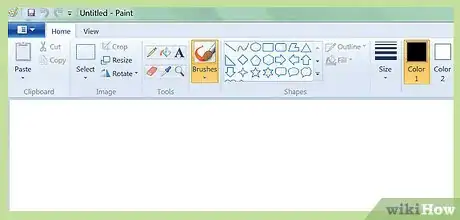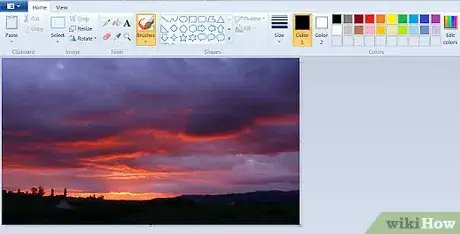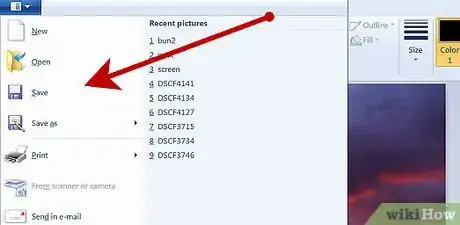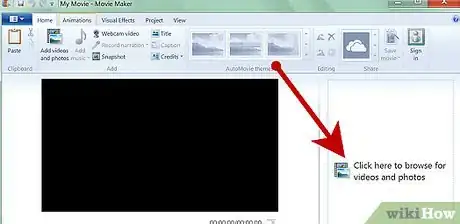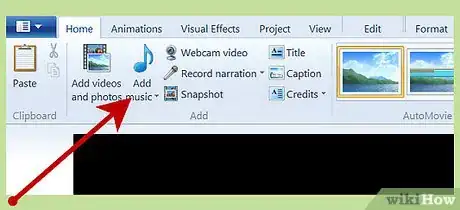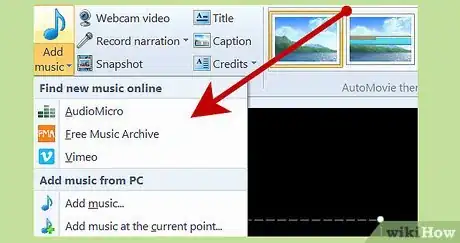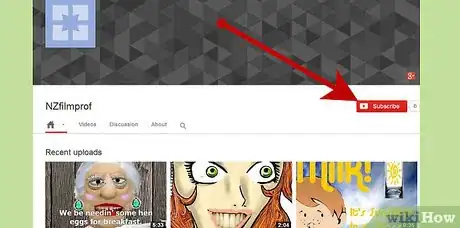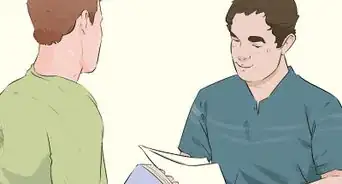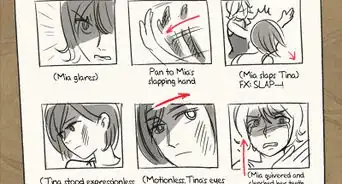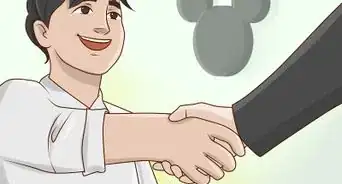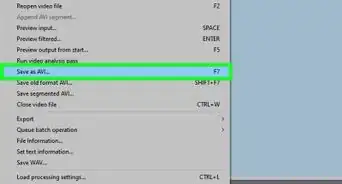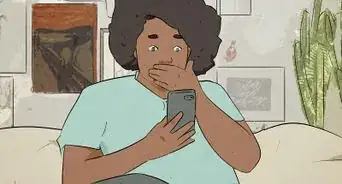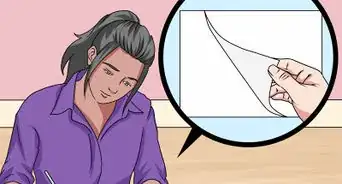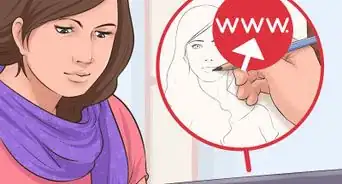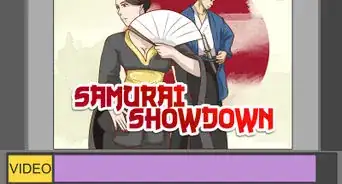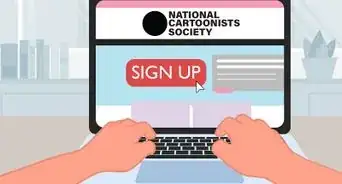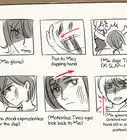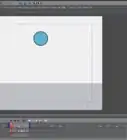X
wikiHow is a “wiki,” similar to Wikipedia, which means that many of our articles are co-written by multiple authors. To create this article, 40 people, some anonymous, worked to edit and improve it over time.
This article has been viewed 111,418 times.
Learn more...
Using common software (such as Paint and Movie Maker), you can create your own animations, for display on YouTube and other internet sites. Additionally, this article will introduce you to free (or, low cost) software that will make animation much easier than you ever thought possible, all without learning Flash or other complex programs.
Steps
-
1Decide what you are going to animate Before you start drawing, you'll need to come up with a good (better, a great!) story. wikiHow has several such entries to guide you; "How to write a short story" is a good place to start. Remember, effective stories have...an introduction, complications, and a resolution.
-
2Storyboard your script (reducing it to a series of cartoon-like drawings). See articles elsewhere in wikiHow for tips on storyboarding.Advertisement
-
3Begin animating!. Open MS Paint (or any image processing software, such as JASC Paint Shop Pro). PSP is fairly straightforward, although there is a learning curve. Most importantly, in PSP you can add the bits that will move in your animation, as layers. Then, you move the layer to get the effect of movement (vs. redrawing your entire frame, or "cel").
-
4Draw your first frame (or, import a photograph). Be sure to make it look just the way you wanted it, or you'll hate the end result, and you will have wasted your time.
-
5Save it into the image software you are using (or, better, paste it into an animation software package). GIF Animator (GIF-A) is free and, for your first animation, it's recommended. You might also look at JASC Animator (the 'trial' version never seems to expire). Animation programs will speed your progress in far too many ways to itemize here.
-
6Make any adjustments you wish to make for the next cel. Usually (but not always) you will not make them drastic. This is animation, so you need to take it a step at a time. Each cel will usually be just slightly different from the last one. If you have learned about 'layers' and are using PSP, this will be accomplished with a flick of your mouse.
-
7Import the saved photos (or, better, the animation file) into Windows Movie Maker (MM). Do this when you have your scenes finished. Drag them down onto the story board. You will probably iterate this step many times, until you get your creation just right.
-
8Add titles and special effects. Once you have all the visuals exactly as you like them, then is the time to add special effects, credits, a title, anything you need.
-
9Add sound; it is essential for an effective film. While MM does have a sound editor, it is buggy, very difficult to modify, and is prone to hanging without warning (often requiring a complete reboot). You can edit your sound in any separate sound editing software (like Cooledit, but any comparable package should do), then drop the entire file into MM. You can download for free very nearly any type of sound you need, off the net.
-
10Don't forget Ambient sound. This is the incidental background sound, usually, some sort of a dull murmur; if you have none, the effect of going from "talking" to "complete silence" is jarring. You can put a soundtrack in the background, but, failing that, you should never (well, hardly ever) have a complete lack of sound. This is another time sound processing software like Cooledit proves its use: you put your ambient (or, your music) soundtrack on one channel, and your speech and sound effects on the second.
-
11Search for examples of animation using the software mentioned in this article. See www.youtube.com (and search there for "nzfilmprof"). "Kiwi Kids" has samples of young students using Paint; and other examples done with PSP.
Advertisement
Community Q&A
-
QuestionHow can I sync music to an animation?
 Community AnswerTry to listen to the music first. After analyzing it, you can then animate it with the music. Alternatively, you can import the music first, then playback.
Community AnswerTry to listen to the music first. After analyzing it, you can then animate it with the music. Alternatively, you can import the music first, then playback. -
QuestionWhere can I download Movie Maker?
 Community AnswerIt comes automatically on most devices running Windows. It can't be downloaded on Chrome, but a quick Google search on Mac can lead you to a link.
Community AnswerIt comes automatically on most devices running Windows. It can't be downloaded on Chrome, but a quick Google search on Mac can lead you to a link. -
QuestionHow can I create a smooth painting on MS Paint?
 Max mahoneyCommunity AnswerIf you draw a picture in one solid color (for example, black), you can save the picture, and then color the black outline a different color, like gray, and trace it over again.
Max mahoneyCommunity AnswerIf you draw a picture in one solid color (for example, black), you can save the picture, and then color the black outline a different color, like gray, and trace it over again.
Advertisement
Warnings
- Don't use drawings, photos, or other artwork of others without permission, and given credit when you do receive permission. For one, you will not be eligible for revenue sharing on Youtube, should your video be an exceptionally popular one.⧼thumbs_response⧽
- Copyrighted songs are a grey area: YouTube does have an algorithm which ferrets out many copyrighted songs, however, unless someone important (like Disney or Warners) complains, your clip will not be banned.⧼thumbs_response⧽
- When MovieMaker fails, it often gives error messages that are misleading (to put it mildly). MM will complain about lack of "virtual memory" or that it is "unable to store file in specified location." These are meaningless messages. Basically, you have exceeded MM's resources on your PC. You must reduce the file size; either divide your animation in half, or, reduce frame sizes.⧼thumbs_response⧽
- Be concise! YouTube limits upload length to no longer than 15 minutes, for one. Frankly, it is an exceptional animation that can keep the viewer's interest for longer than five minutes.⧼thumbs_response⧽
- Movie Maker has its limits. You could find that a clip longer than two minutes, is about as long as it can handle. To make a 4 minute animation, usually requires that you paste two 2-minute files together (using software like Boilsoft to paste them, but there are others).⧼thumbs_response⧽
Advertisement
Things You'll Need
- MS Paint (or the equivalent; JASC PaintShopPro, Photoshop, etc.)
- A computer (the more RAM and processing power, the better)
- A digital drawing tablet (highly recommended, but not mandatory)
About This Article
Advertisement


